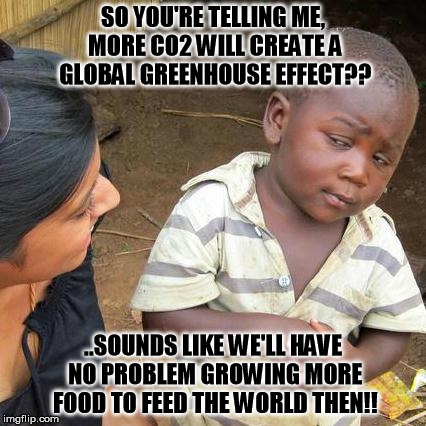Old Rocks
Diamond Member
As has been pointed out many times already, the 76 trillion figure is a lie. And ol' Walleyes is one of the prime liars on this board. Claims to be a Phd Geologist, and continually calls people that are supposedly peer level in the AGU and GSA frauds and liars.Ah here it is,
Plants may run out of time to grow under ongoing climate change
"The causes and consequences of global warming are still under debate, but what would actually happen to all the plants, essential to many aspects of our lives, if the climate in the planet does get warmer? A new study publishing in the Open Access journal PLOS Biology on June 10th by University of Hawai'i scientists addresses just this question.
A key potential 'benefit' of global warming that has been considered is that plants at northern latitudes will thrive in a warmer world. However, this prevailing assumption ignores the fact that plants in the North will remain limited by solar radiation, curbing the positive effects of warming and additional CO2 availability. In addition, that same warming could surpass plant temperature tolerances in tropical areas around the world, and further be accompanied by drought.
"Those that think climate change will benefit plants need to see the light, literally and figuratively," says Camilo Mora, professor at the University of Hawai'i at Mānoa's College of Social Sciences and lead author of the new study. "A narrow focus on the factors that influence plant growth has led to major underestimations of the potential impacts of climate change on plants, not only at higher latitudes but more severely in the tropics, exposing the world to dire consequences," he adds.
The new study shows that ongoing climate change will lead to overall declines in plant growing days by 2100 due to a mixture of warming, drought, and limited solar radiation.
Using satellite-derived data, the study identified the ranges of temperatures, soil moisture (water availability) and light (solar radiation) within which 95% of the world's plant growth occurs today. The researchers then used climate projections to count the number of days in a year that will fall within these suitable climate ranges for plant growth in the future.
Although the study did find that warming trends will increase the number of days above freezing at higher latitudes by 7%, these same locations will remain limited by light, a trend that has been missed by previous studies that focused on temperature alone. "Regions at higher latitudes will likely have less frost and snow on the ground in the future, but many plants will not be able to take advantage of those warmer temperatures because there will not be enough sunlight to sustain their growth," says Iain Caldwell, a co-author of the study. "
more at link
Why then did none of this ever happen when it has been warmer before? You have to ask yourself why not a single disaster that these people bleat about has ever occurred when we KNOW it has been much warmer.
A thinking person would begin to ask some very hard questions of them.
Like 'who pays you to deny climate change on message boards?' Questions like that?
No one. I wish I were paid to do it. I am just a scientist who is tired of watching crap science get passed off as good. It's as simple as that. Learn what the scientific method is and then show us how the AGW crowd is following it....or, more to the point, how they have abandoned it.
Simple risk-analysis:
- if climate change isn't occuring and we take steps to combat it, nothing bad will happen.
- if climate change IS occuring and we DON'T take steps to combat it, we die.
Simple risk assessment, the cost to do anything about global temps is 76 trillion dollars. That is THEIR estimate. Further, for that cost, we get to lower the global temperature in 100 years by ONE degree. Maybe. On the other hand just think of the technology that could be developed for that 76 trillion dollars Think of the ACTUAL pollution that could be cleaned up for that money. Basically, the warmists want to spend the combined GDP of the world (5 times over) on a maybe, instead of dealing with real pollution.
I hate to break it to you, but that is simply asinine.
Presently, wind is already about half the price of coal, and solar will soon be cheaper than coal, without any of the externalities of coal. And when you talk about coal, you are talking pollution of water, ground, and air. But that is what Walleyes defends.


